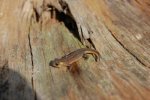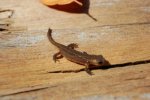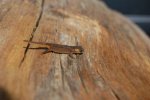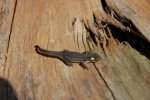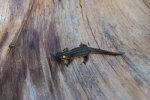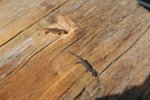caudataman
Member
- Joined
- Feb 6, 2001
- Messages
- 198
- Reaction score
- 14
- Points
- 18
- Location
- New York
- Country
- United States
- Display Name
- Brian
Hi all,
Thought I'd share a couple photos of some interesting color variants I got with my O. vittatus this year. I refer to them as "the blondes". Larvae were very pale (will try to get a photo shortly) with jet black eyes. Here are a couple pics of the juveniles with a standard color for comparison... Not sure if they're leucistic or what, but they're interesting if nothing else...
Thought I'd share a couple photos of some interesting color variants I got with my O. vittatus this year. I refer to them as "the blondes". Larvae were very pale (will try to get a photo shortly) with jet black eyes. Here are a couple pics of the juveniles with a standard color for comparison... Not sure if they're leucistic or what, but they're interesting if nothing else...

